Summer is already knocking, and now is the best time to plan that family vacation. Owners bring their pooches on all types of watercraft – be it stand-up paddle boarding, kayaking, canoeing, boating or sailing.
If you love the outdoors, then one of your bucket list activities should be kayaking. It is an exciting experience especially when you get a grip on it. Now, if your dog keeps you company all through, why not go kayaking together?
Well, it may seem like a scary experience for your dog but with the right accessories, a little training and some handy tips, you can have a great time together.
On that note, what are the most crucial things that you should keep in mind?
Tips to go kayaking with your dog
Evaluation
First, before you let your pet board the yak, you ought to be sure that it is an experience they will enjoy.
Some of the ways to evaluate if your dog will be okay include:
Behavior and Tendencies
Does your dog get excited at the sight of water? Some dogs have great fun jumping from poolside onto a floating body board. How good is your pup with following instructions?
Also, you want to be sure that your dog can sit still and balance as you paddle.
Age, Breed and Size
It's great to get your dog used to water and boating at an early age but middle-aged dogs are equally as good since they can take commands pretty well.
Obviously the experience would be too stressful for a senior dog. So do take age into consideration. Some dogs can capsize a kayak at the hint of movement.
Large breed dogs with a super active personality might make it more difficult to stay still as you paddle along. However, a little more practice can help to calm their nerves and let them remain calm.
Health
The health is undoubtedly one of the most critical factors.
If your dog suffers from vision or hearing loss or chronic diseases such as arthritis - these can greatly decrease your ability to go kayaking together.
So be honest with yourself and make the right decisions for both your pooch and yourself.
Training
Now that you are sure your dog is suitable for kayaking, the next step is making sure he is ready for the task that lies ahead.
One way to ascertain your pupster can face the challenge is if it responds well to commands.
Let's say if it responds well to ‘stop,' ‘go,' ‘leave it,' etc. then you are a step ahead to preparing it for a fantastic experience.
If your dog finds it hard to follow what you say, then you should consider starting the training way earlier before planning for the trip.
Start by taking your dog for short trips to the park, hiking or cycling.
Next stage, when you are sure your dog follows commands pretty well; try setting up a kayak on dry land.
Command it to sit and stay still and observe how long it waits.
At first, try getting on and off the kayak with your dog by the side, so it associates it with a safe place.
Slowly withdraw and leave him alone on the yak.
Take note: Never force or place your dog into the water, as that could easily make him even more fearful. Start slowly even if it takes several attempts to get even his first paw in the water.
At all times, be sure to keep using the commands you would use in water.
Examples are, ‘load,' ‘unload,' ‘sit,' ‘stay' etc. Start by staying close to your dog in water and keep reassuring him if needs be.
Repeatedly, your dog will be comfortable and finally manage to do it by himself.
Getting Comfortable With the Kayak
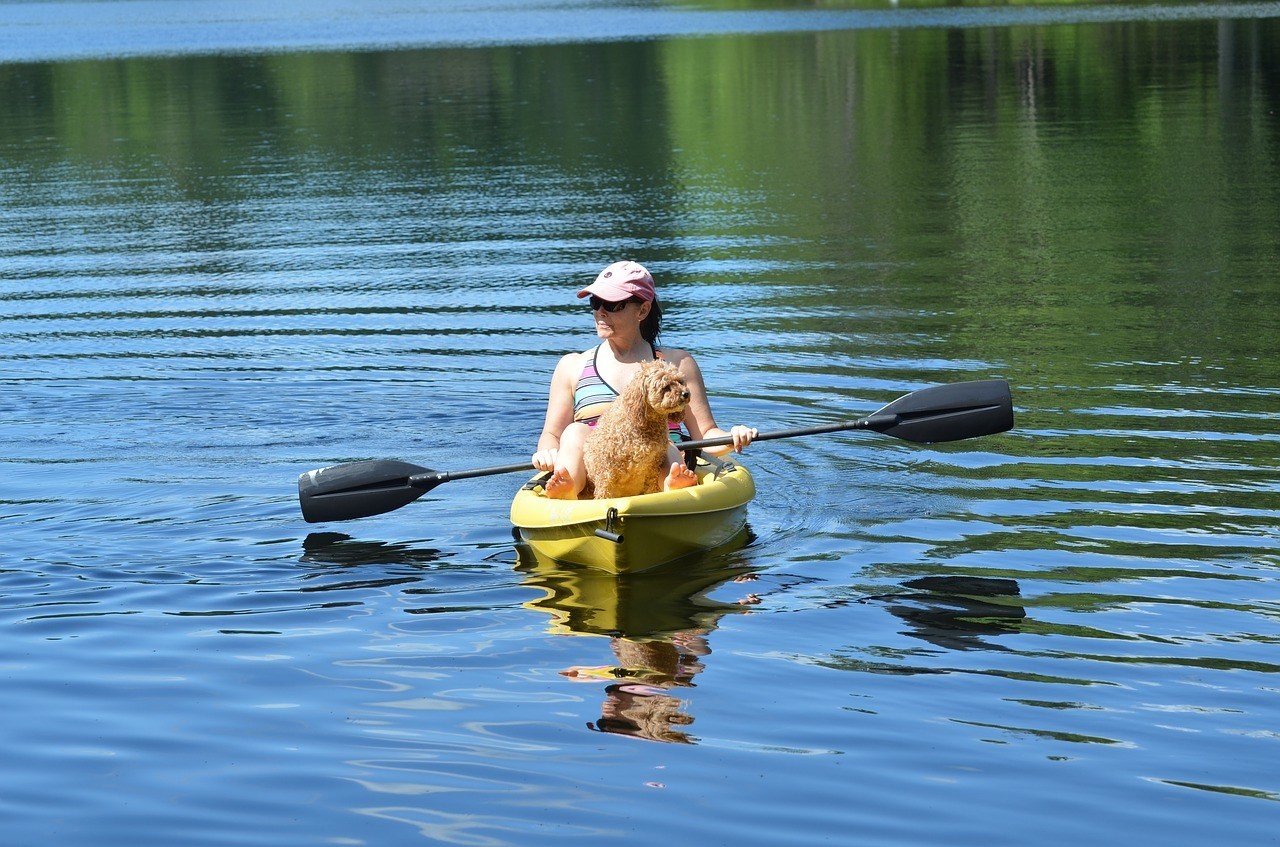
Take your time to acclimate your pooch
Kayaks are big, and if it is your dog's first encounter, then it is likely to get scary. Do not add on to the anxiety by introducing the kayak immediately.
During the training, you can implement things your dog can relate to learn better. For example, you can set up two drums on each side and set up a few planks on top to create an illusion of a kayak.
At this point, you can help the dog go up and down the planks until it is used to being suspended by itself.
This is particularly necessary to help you get it on a kayak when you set out to the water.
During the first encounter with a kayak, let your dog it explore alone at first before you can start placing commands.
After some time, the dog will start to sit still in the kayak without the need for commands. You can do this a few days before you go kayaking, so the dog keeps the memory of the kayak.
Again, you can lure your dog to keep going in and out of the kayak, so it gets comfortable earlier.
Load and Unload
As mentioned, your dog may not have a positive reception at the sight of the yak.
You, therefore, need to take your time before you can get him into the water.
Once your dog is comfortable going in and out of the kayak, the next thing you should do is help it stay longer in there before jumping out.
You can help him stay longer by getting his favorite treats in there and adding more as he eats.
This will help it to associate staying in the kayak to getting the treats. Any vital step your dog takes needs you to appreciate and encourage it.
You could clap for your dog, or use tags such as, ‘good job,' ‘well done' etc. This again depends on what your dog is used to or what it relates to better.
Improving Balance
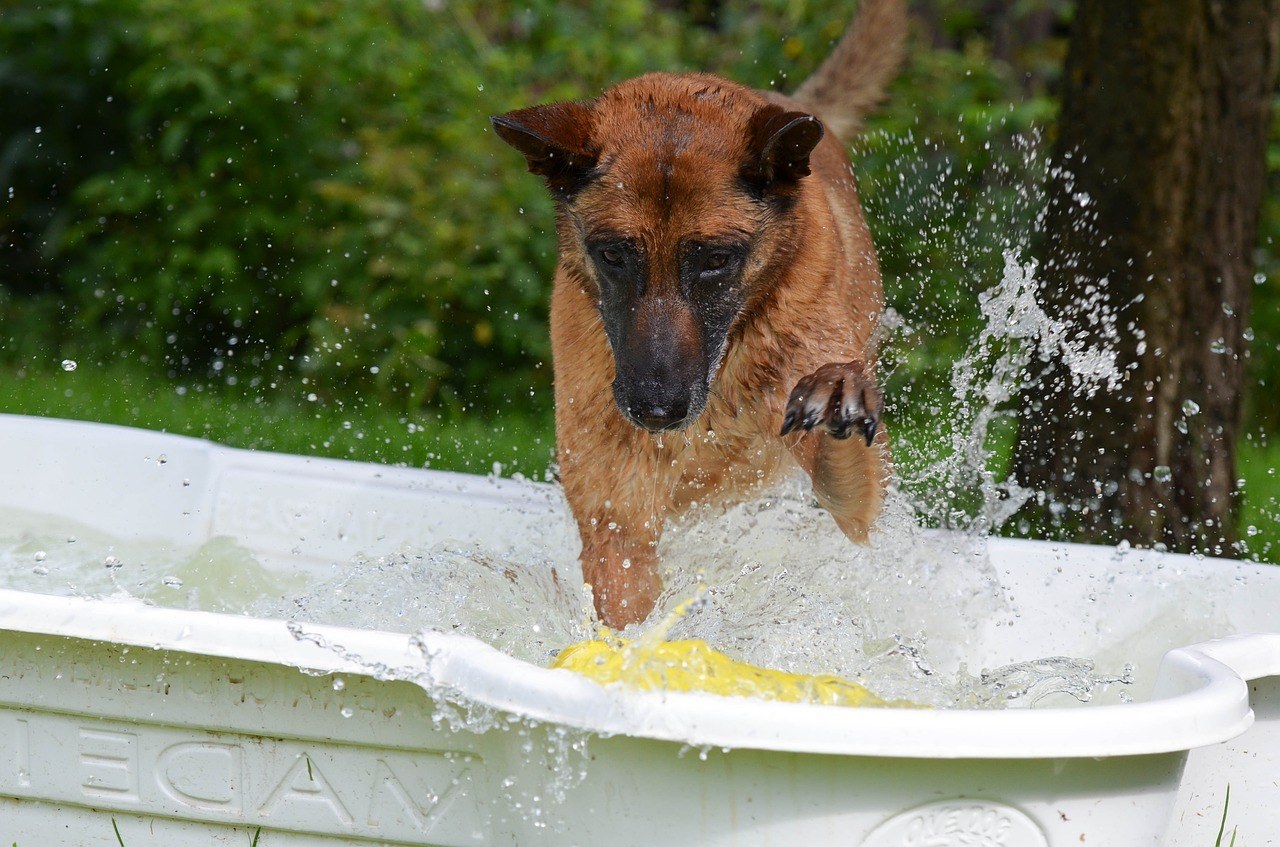
Fill the wading pool with water and encourage your pup to jump and splash on the boogie board
Using a wading pool or a dog pool and a floating body board (also called boogie boards) your dog can benefit from the confidence and balance gained from mastering this wobbly mini-kayak.
Teaching Skills
This game is not only fun but will also help your dog balance and gain water confidence.
This game is particularly great since it introduces your dog to the rolling motion of the water - an important skill if your dog is accompanying you in your boating or kayaking adventures.
Not to mention this is also great for helping dogs develop the skill required to compete in dog surfing competitions.
Also Related: Can Dogs Eat Seaweed?
Kayaking Together
Once your dog is ready to stay in the yak longer, set it up in water and ensure, all the safety precautions are in place.
Consider starting out in flat water - a lake, pond or bay. This will help make for a positive first boating experience for you and your furry friend,
Start by moving at the slowest speed you could, so as not to scare your pooch.
Gradually increase the rate and keep checking your dog's reaction after every speed increase. If he seems nervous, reduce the speed and assure it from time to time.
This video is great at showing you a dog's first experience in a kayak.
During the early stages of the trip the dog is fearful and holding onto his owner but by the end of the trip the dog finally settles down and relaxes.
Keeping Your Dog in the Kayak
Your dog by now is familiar with the environment and can stay still for a long time.
But, you are never ready of a situation where your dog might want to jump off or get overwhelmed.
One of the ways you can help your dog stay in longer is using the command ‘stay’ as many times as you need.
Also, ensure your dog is closer to you so that so that you can grab the harness anytime it tries to move.
The first trip with your dog will undoubtedly be cumbersome, but you have to be patient.
Take a short trip to and fro the shore and have as many breaks to drink water, feed and rest.
A few trips in, your dog will hold on more, stay easy and follow commands better.
What Type of Kayak Should You Choose?
Kayaks come in different sizes, and the size you choose will depend on the size of the dog and your personal preference.
Also, if your dog is super active in water, you may want to get a large kayak where you can fit your dog between your legs. This can help you hold it back if it decides to jump off the kayak.
Any kayak can work just as fine, but you may want to evaluate your dog's personality before you choose one.
If you're choosing an inflatable kayak just be careful as a dog's nails can be sharp. Place towels or a mat inside so they can't puncture a hole on it.
For the best dog friendly INFLATABLE kayaks our top recommendation is the Sea Eagle 370 since it can accommodate 2 plus 1.
For non-inflatable dog-friendly kayaks, here are our recommendations:
Best Kayaks for Dogs
Important Safety Dog Kayaking Gear
Life Jacket
Just like you, your dog needs to have a few more items for the trip. One crucial element is a personal flotation device (PFD).
You should never let your dog board the yak without the PFD or life jacket on.
They can accidentally fall off from the yak and possibly drown. With a life jacket you can easily save your dog immediately if it happens.
These are some of the best examples of life jackets for your dog.
Best Life Jackets for Dogs
Collar, Leash and Harness
If your dog tends to fall off as you paddle, you can pull him back using these. Although most life jackets come with a top leash, it is still advisable to carry the usual ones just in case you need them.
Again, the leash will come in handy on dry land. On this note, it is not advisable to tie your dog to the boat as it may pose hazards unexpectedly.
Take note: Never, ever, EVER tie/leash/tether your dog to your boat. HOWEVER, always have a dog-leash within your immediate reach and RESPECT YOUR LOCAL LEASH LAWS!
Food and Treats
As you pack your snacks for yourself, you should get some for your furry friend as well.
You can carry treats they like and additional food to eat after kayaking. Treats will also come in handy when training your dog to go up the yak. Also, carry adequate water for your dog.
Pack their feeding bowls to ensure your dog feeds as usual.
Sunblock
If you are out in the sun for a long time, it is essential to pack sunscreen for your dog.
Like humans, they are prone to developing sunburn despite being covered by fur. The nose and belly are exposed to direct sunlight and could burn easily.
Epi-pet is the ONLY FDA-approved sunscreen for pets and that we recommend.
Doggles
As a safety precaution still, it is essential to get goggles for your dog. You do not want them to soak in water, and if you're going to swim after your kayaking experience, then your furry friend is covered.
Again, it helps to protect the eyes from UV rays and extreme light, especially during the hot weather.
Here are some of the best doggles we recommend.
Best Goggles for Dogs
If you're planning on fall or winter kayaking with your pup a sleeping bag is another must-have item especially during those wet and chilly days.
Kayaking with a dog, just like any other exercise is a learning process.
Some dogs take time on the training bit, but once they have a grasp of it, they make it easy for you as well. It is a behavioral process, and the best you can do is be patient and encouraging your dog.
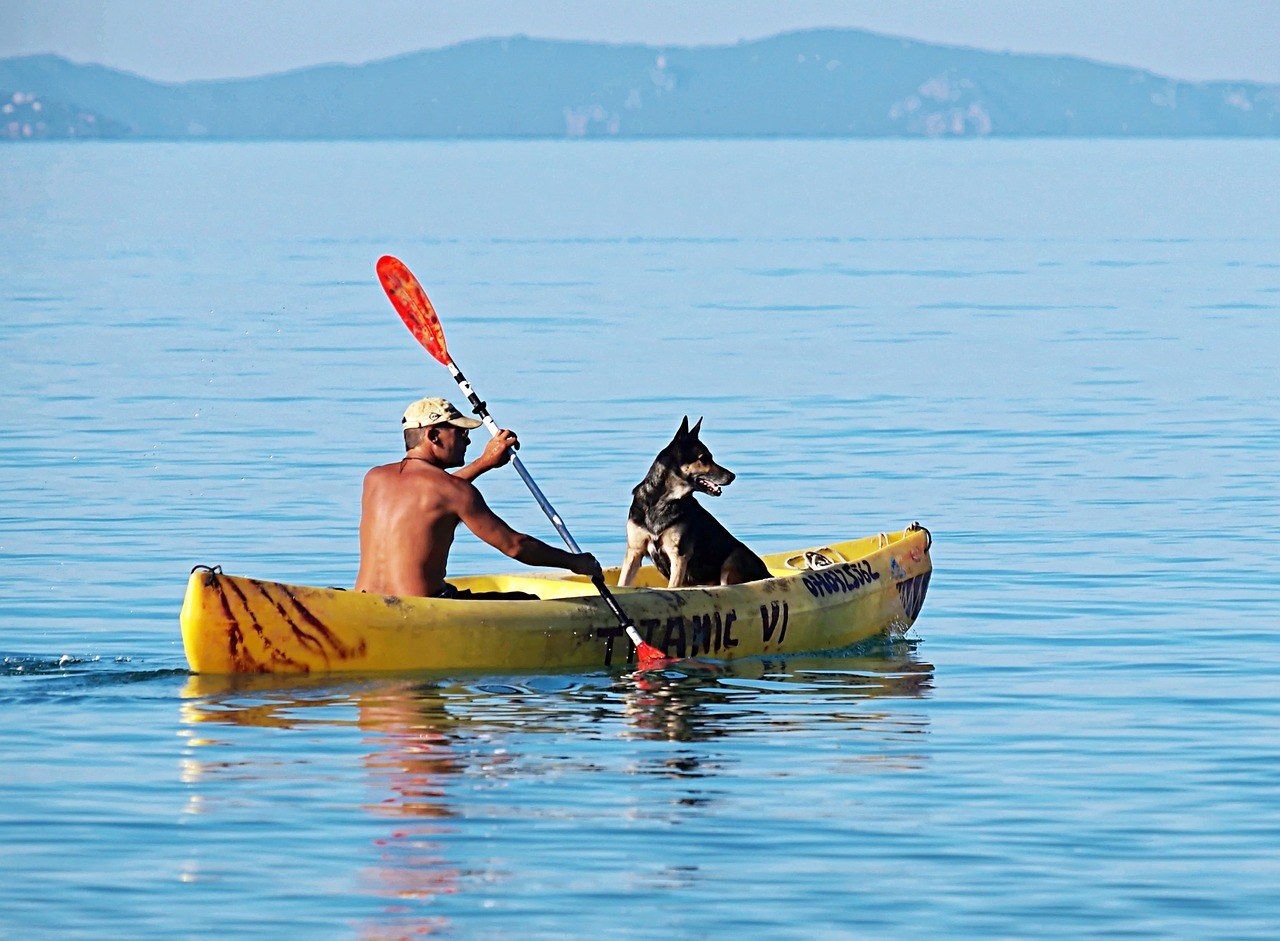
Start off in calm waters, take it easy and slow and enjoy kayaking with Fido! Have a safe and happy boating adventure!
Do you go kayaking with your dog? We’d love to hear about your experiences! Let us know about it in the comments below!

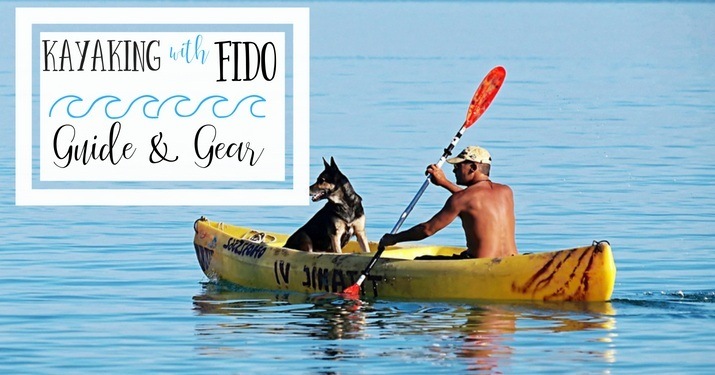










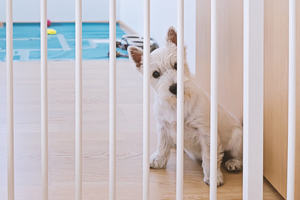

This article is so cute. It’s way too enjoyable to paddle with your pet along. And with the tips you laid, well I think this would be perfect. Thumbs up!